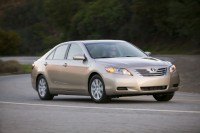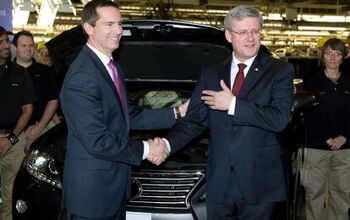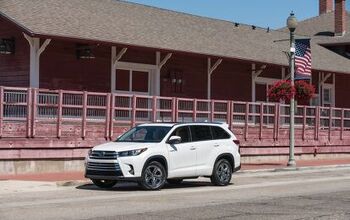Toyota To Build CNG Hybrid Camry
While Chrysler jumps headlong into the concept car vaporware EV game, Toyota is taking its usual evolutionary approach. Bloomberg reports that ToMoCo will stick with its Prius strategy, augmenting it only with a Compressed Natural Gas (CNG) burning hybrid version of its Camry sedan. The CNG Hybrid is a response to lower natural gas prices in the US compared to normal gasoline, and the modest success of Honda’s CNG Civic. No pricing or efficiency information is currently available for the CNG Hybrid Camry. Meanwhile, Toyota is still driving down the replacement cost of its Prius-powering NiMh battery packs, which now set first and second-gen Prius owners back $2,299. Calling the Prius “as close to a silver bullet as you’re going to get,” Bill Reinert, national manager of advanced technology for Toyota Motor Sales claims “the reason the Prius was such a successful car is that the customer didn’t have to do anything to it.” And to those who say that hybrids are a “transitional technology,” Toyota will be selling a million Priora per year by 2010, before Chrysler and GM even start selling their highly-touted EVs. Slow and steady, as they say…
More by Edward Niedermeyer


































Comments
Join the conversation
CNG is a New Zealand staple. In Australia we have factory LPG dedicated Falcons, Commodores, Mitsubishi Magna (before they quit building cars in Australia). All working and with LPG prices aprroximating 1/2 price of petrol economical to boot. With a government rebate of AUS$1000 for new cars and $2000 for converting older cars a winner all around. Now tell opec you are moving you entire dependance from oil to natural gas for transport and see them (and the E85'ers) start blubbering!
@tulsa_97sr5: CNG tanks don't fit well in the convoluted space that gas tanks do. Example: Honda Civic GX, with a 7 gallon equivalent carbon fiber tank, still loses half its trunk space.